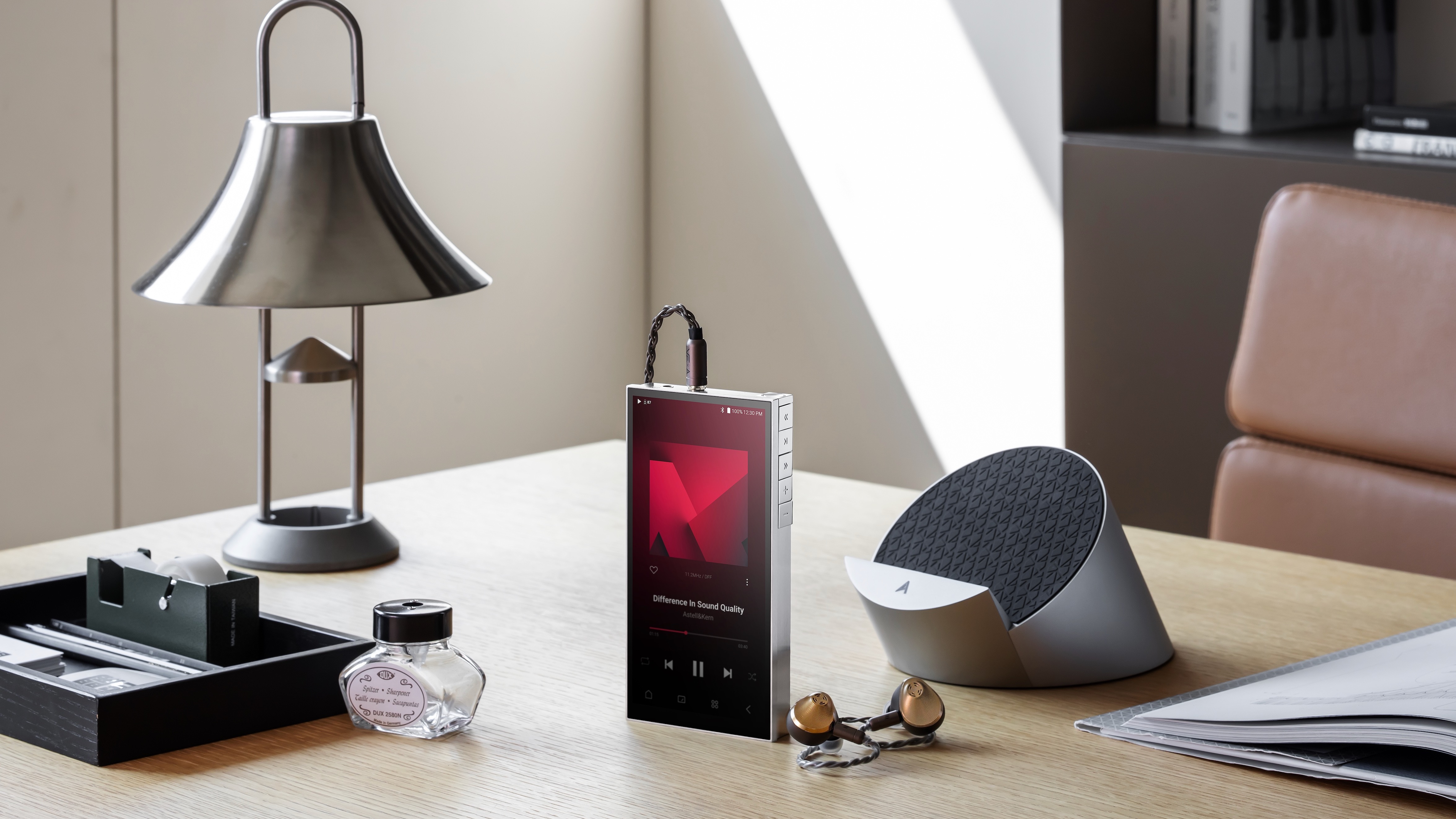Sony A95K vs LG G2: which is the best 2022 OLED TV?
One of the first-ever QD-OLED TVs takes on the best-ever LG OLED in a battle for premium TV domination
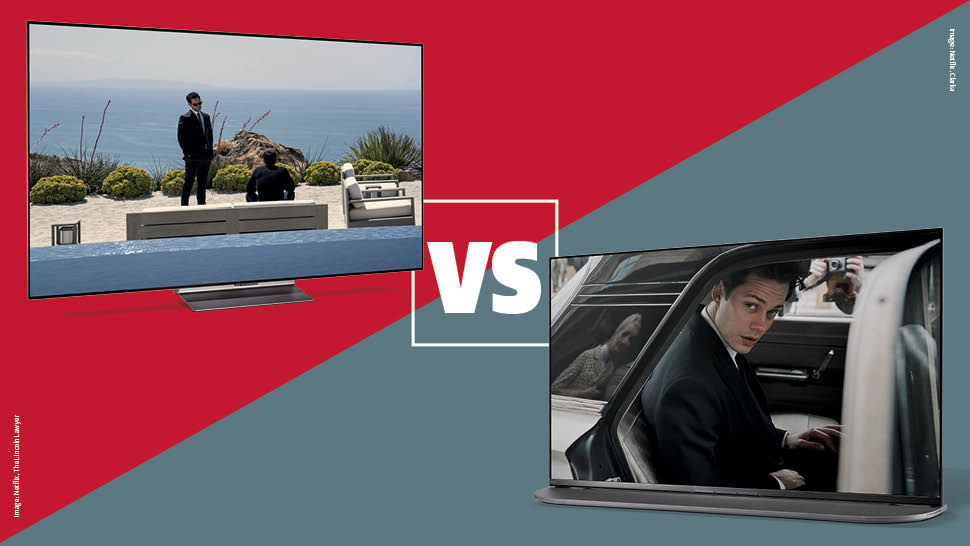
OLED is comfortably the most popular premium TV technology on the block and has been for a while now, but it's no longer the only game in town. 2022 saw the arrival of a new variation called QD-OLED, which arrived with promises of combining all the benefits of standard OLED with improved brightness (a traditional, relative weak spot for OLED) and more vibrant colours.
One of the first QD-OLEDs available to buy (alongside the Samsung S95B) is the Sony A95K, and as you'll see from our review, it's incredibly impressive. Is it, though, the death knell for standard OLED TVs? LG's latest and greatest (and brightest) 4K model, the G2, says no.
Both TVs are bona fide five-star belters, with genuinely new tech that raises picture performance to new heights. But both differ in approach quite dramatically. So which is best?
One note before we proceed: our findings are based on reviews of the 55-inch version of the Sony A95K (the XR-55A95K) and the 65-inch version of the LG G2 (the OLED65G2). Past experience tells us that the performances of these TVs should scale up and down pretty consistently, but that can't be guaranteed (bigger TVs tend to sound better than smaller models, for example), so do employ a smidgeon of caution if you're looking to buy one of these TVs in a size that we've not reviewed.
Price
New tech always commands a premium, and that's no different with the Sony A95K. The 55-inch version (or XR-55A95K, to use its full title) launched at a price of £2699 / $3000 (around AU$4800), and while it has now been discounted somewhat, in December 2022 it still commands a price of £2199 / $2500 (around AU$4000).
That's significantly more than the LG G2. The equivalent 55-inch G2 launched for £2399 / $2100 / AU$4076 and it's been more heavily discounted, too: in December 2022 you can now pick it up for £1499 / $1600 / AU$3695. Now that's a chunk of change.
One other thing to bear in mind is that the Sony A95K comes in far fewer sizes than the LG G2 – just 55- and 65-inch models, whereas the G2 adds 77- and 83-inch models, and there's even now an incredibly large 97-inch version.
Winner: LG G2
A pretty straightforward one, this: the G2 started cheaper than the A95K, has had the bigger discounts, and in all likelihood will continue to do so.
Design and build
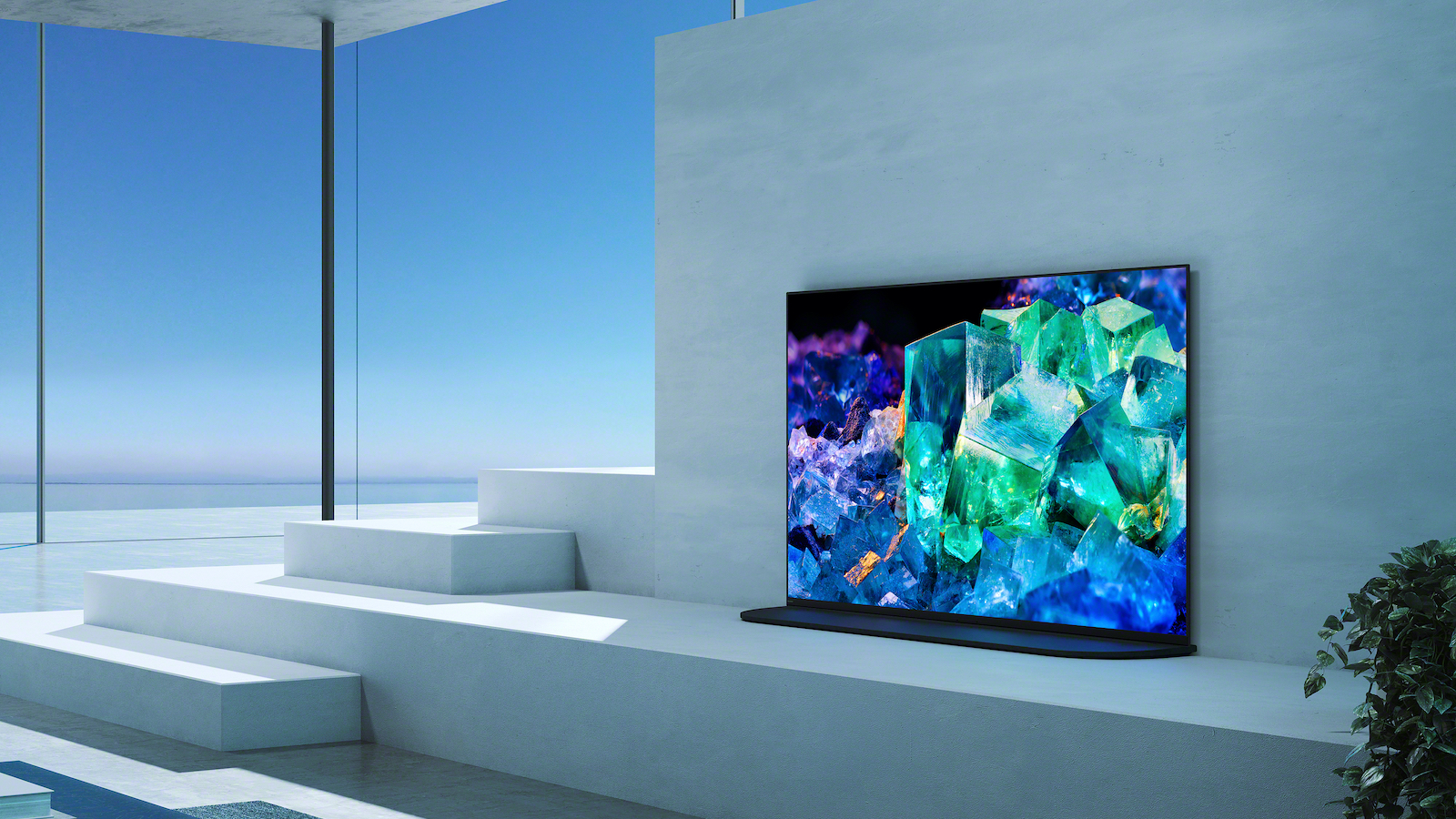
No matter how stunning your TV's picture quality, you'll still want the set itself to look good. After all, it will be switched off a fair bit of the time.
Well rest assured, both of these TVs are lookers.
The G2 sports slimmer bezels than the G1 – 6mm down from 10.2mm (for the 65-inch model) – which gives the screen a cleaner, more expansive look. It also loses the G1's 45-degree Chamfered edges in favour of cleaner right angles, with a two-tier design and high-quality metal 'wrap' around the sides.
It's super thin and intended to be hung flush to your wall. In fact, it comes bundled with a (super low-profile) wall mount rather than a stand. You can buy an official stand separately, but it's expensive. Those looking for a cheaper option might want to consider going for a third-party stand that's compatible with the G2's VESA mounting points.
Sony's A95K looks a little different to most TVs. It can be situated in two different styles: front and back positions. The front position has the bottom 'lip' of the TV behind the screen out of sight, making for the most immersive viewing experience. In this position, the set has a slight lean backwards that should compensate for it standing lower on your furniture than would a TV with a more typical stand. In the back position, the lip is in front, letting the TV sit as close to the wall as possible. If you want the TV to look like part of the wall, this latter position is for you – we found it to be the more striking of the two, but which will suit you will depend on your room and furniture.
There is a caveat to this design. The TV needs to be placed on a shelf or plinth that is wider and deeper than the TV for safety reasons. Or you can wall mount it, with the stand detaching entirely.
Other than that, it's business as usual and, as expected at this end of the market, discreet design is the order of the day. The TV's bezels are extremely narrow so they don't detract from what you're watching, and wire channels keep your cable spaghetti in check. Suitably premium, in other words.
Winner: Sony A95K
While wall-mounters may well prefer the simple picture frame-like design of the G2, the A95K is the more striking TV – and it comes with a stand (and an innovative one at that).
Features
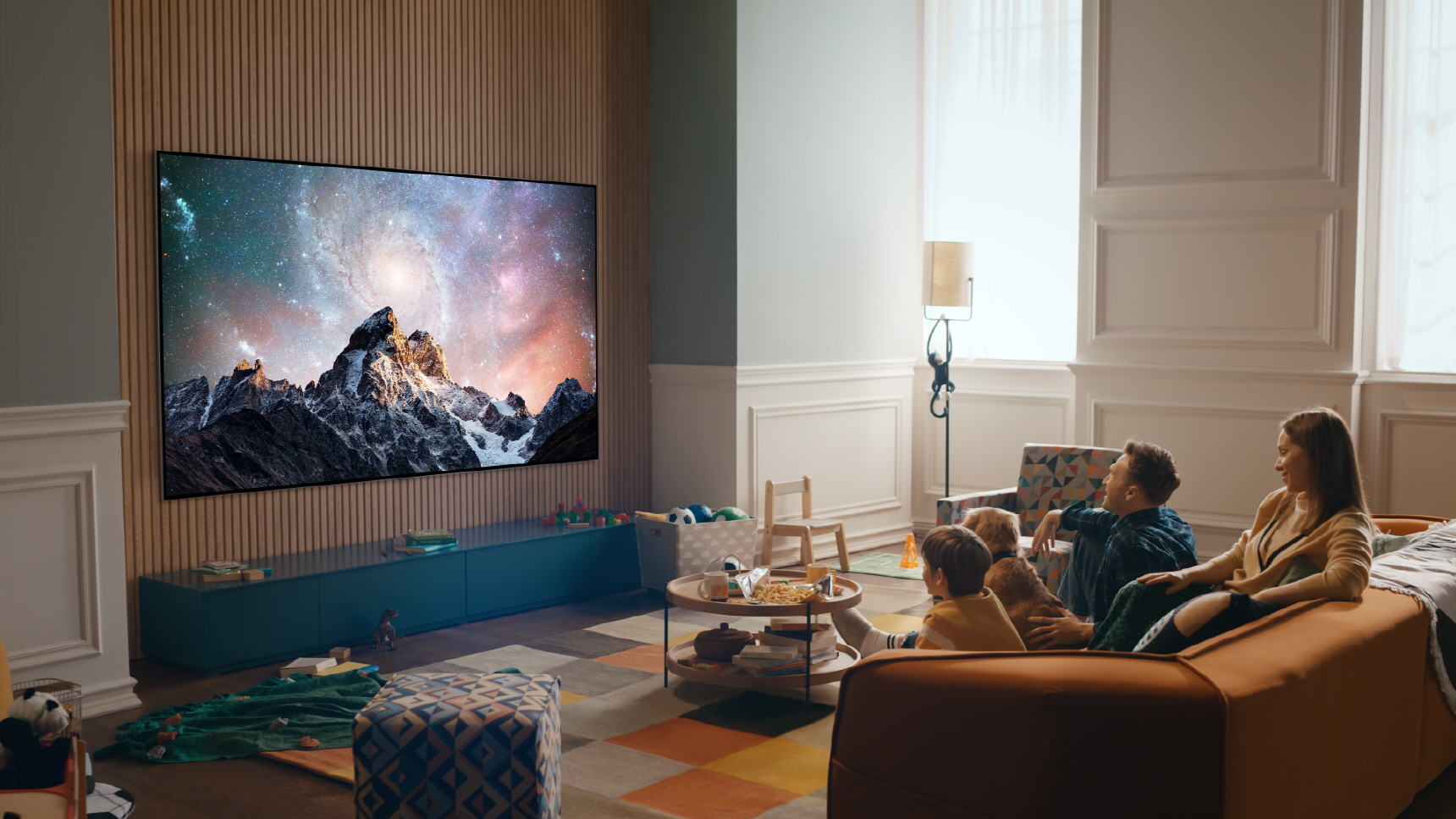
The big selling point of the G2 is the addition of a new heat sink layer to one of LG’s high-brightness OLED panels. Being able to dissipate more heat means the TV can run as much as 15 per cent more brightly than last year’s G1 (and this year’s C2) without increasing its susceptibility to screen burn.
The G2 packs LG's latest Alpha 9 Gen 5 processor, which uses deep learning to detect and enhance individual objects, ensuring they are properly distinguished on screen.
The new software yields more efficient AI upscaling, removing a step that could potentially add unwanted artefacts, and it boasts a new Dynamic Tone-mapping Pro Algorithm that will subdivide the screen into more discrete areas (by an order of 10) for more granular enhancement.
LG's Object Background Enhancement feature also gains a Dynamic Vivid Mode that can better differentiate foreground and background, analysing them separately and creating a greater depth of field.
If you're on the hunt for the best gaming TV, you'll be pleased to hear that all four of the G2's HDMI ports are HDMI 2.1 certified, as they were with its predecessor, but this time there's an uncapped bandwidth of 48Gbps, whereas LG's 2021 and 2020 OLEDs were limited to 40Gbps. In real terms, that doesn't actually make any difference, as 40Gbps was already enough for all current video and audio formats, but perhaps having 48Gbps connections adds an extra degree of future-proofing.
What really matters is that the G2 supports all of the same next-gen gaming features as the G1, so that's 4K@120Hz (with and without Dolby Vision), ALLM and all current formats of VRR. It also has an HGiG setting that generally results in more accurate contrast with HDR games, and there's once again a dedicated Game Optimiser menu that puts all of these options at your fingertips when you're playing. There's also native integration of cloud-based game streaming services Google Stadia and GeForce Now.
The G2 has the same portfolio of apps as its predecessor, with Netflix, Amazon Prime Video, Disney+ and Apple TV all on board and all with full support for 4K, Dolby Vision HDR and Dolby Atmos sound. And in the UK, there's a full complement of TV catch-up apps, including BBC iPlayer, ITV Hub, All 4 and My5, courtesy of a partnership with Freeview Play.
Lastly, the G2 runs the new webOS 22 interface. This brings multiple user profiles, a multi-view feature, family settings to stop anyone watching for too long, and the option of displaying artwork, the weather, or streaming music while not in use.
Replacing the A90J, the Sony A95K has big shoes to fill. But it looks like it's up to the task. For starters, it's the first QD-OLED TV to be officially unveiled. There's more on this in the next section.
As you'd expect, the somewhat controversial 'Perfect for PS5' program continues, so the A95K features Auto HDR Tone Mapping and Auto Genre Picture Mode for use with the PS5. Thankfully, standard ALLM and VRR are also supported out of the box – no waiting months for a firmware update as there was for owners of Sony's 2021 TVs. Unfortunately, there's no Dolby Vision game mode, so gaming in Dolby Vision is unplayably laggy. There's no HGiG setting either.
Two of the A95K's HDMIs are also HDMI 2.1-certified with an uncapped data rate of 48gbps. It supports 4K@120Hz via these sockets, but be aware that one of these is also the eARC port, so you'll lose one HDMI 2.1 input if you want to connect a soundbar or AV amp via eARC.
Google TV is the operating system here, with all of the usual streaming apps present and largely correct (Disney+ is lacking Dolby Atmos support), and the A95K also features Sony’s own Bravia Core service, which delivers blockbuster movies in noticeably higher quality than you get from rival services – but you'll need superfast internet speeds (80Mbps+ for the maximum quality) to take full advantage.
The A95K also comes with Bravia Cam, a small video camera that magnetically attaches to the top edge of the TV. At launch this only offered video chat functionality, but it does now support the promised Ambient Optimisation Pro (which adjusts picture and sound based on where you are in the room), Proximity Alert (which is designed to prevent children from standing or sitting too close to the TV), Gesture Control and Auto Power Saving Mode (which detects when you’ve left the room and dims the screen) features.
Some people may find some of these features useful, but we think that most buyers will ignore them. In fact, they might never bother connecting the camera. We can’t help but wonder how much it’s added to the A95K’s overall price and rather wish Sony had instead made it an optional extra.
Winner: LG G2
The Sony's QD-OLED panel is obviously a big deal, but the G2 counters with an unbeatable array of gaming features and a better, more app-complete OS.
Picture
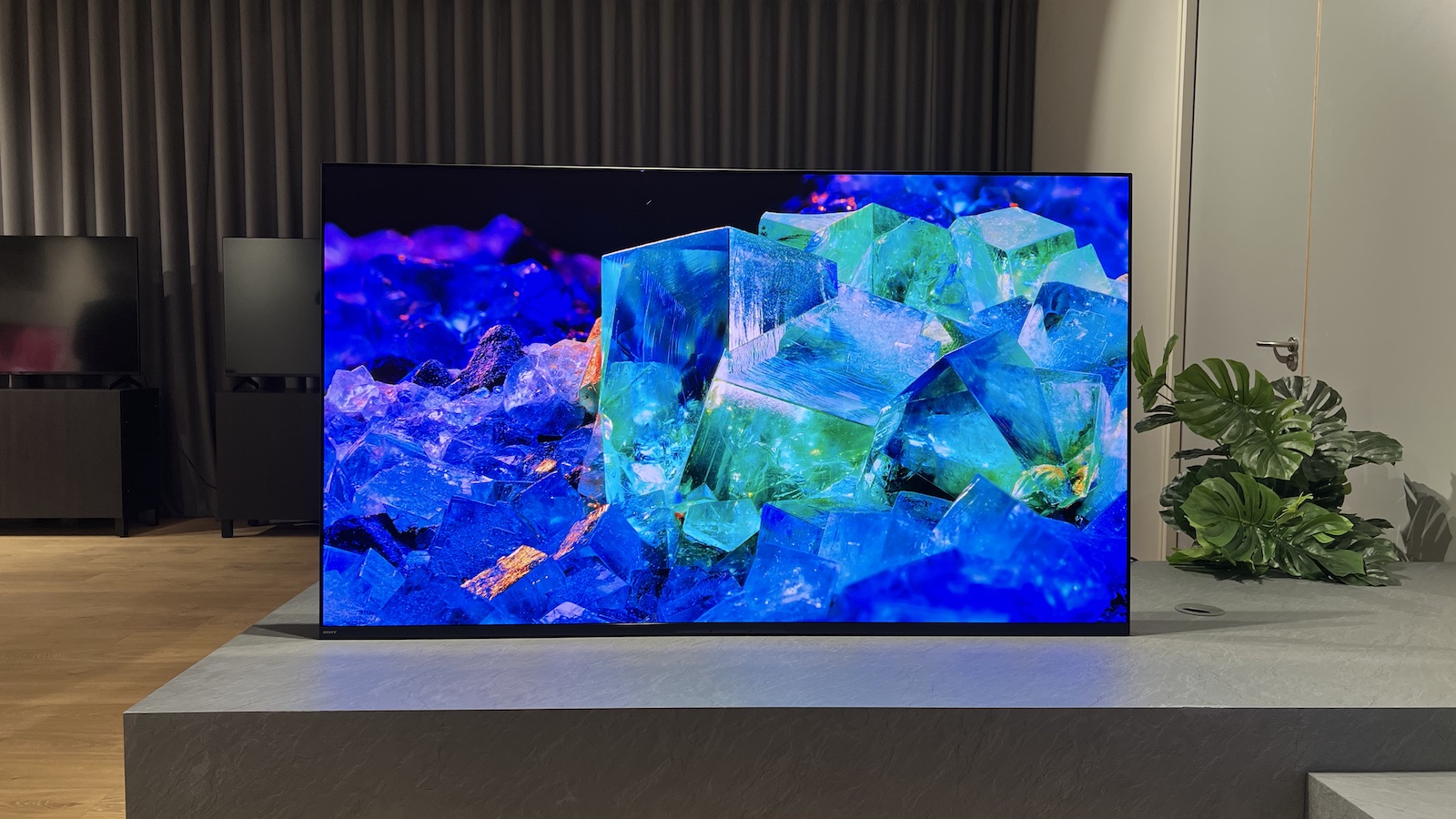
So, Sony was first out of the gates with a QD-OLED TV in the form of the A95K. What's the big deal?
QD-OLED works by combining self-emissive OLEDs with Quantum Dots, theoretically combining the perfect blacks and impeccable contrast of the former with the vibrancy and brightness of the latter. This new TV technology has been pioneered by Samsung Display, which manufactures the panels for this Sony A95K.
Of course, the panel is only part of the picture performance puzzle, and Sony has some tricks up its sleeve in order to squeeze the maximum out of the QD-OLED display. Top billing goes to the heat diffusion sheet that creates uniform heat distribution, and the company's XR processor, which has been tweaked for even better performance.
This year the XR processor has 'Depth Control', which is designed to improve the three-dimensionality of images, and 'Flexible Colour Contrast Control', which can intelligently increase the vibrancy of colours.
As well as being brighter and having greater colour vibrancy (particularly in the brightest parts of the picture) than a standard OLED TV, Sony says that its A95K QD-OLED also boasts even better viewing angles.
Those are the claims, anyway. So how did it perform in our testing labs?
Very well indeed. The image has bags of depth, with exceptional three-dimensionality. It also has a fine sense of solidity – the result of excellent sharpness, loads of fine detail, brilliant contrast and Sony’s Depth Map feature.
Surprisingly, though, the A95K isn't noticeably brighter than the LG G2 with real-life content. In fact, in many scenes it’s LG’s top OLED Evo model that looks brighter.
But it's the details within that brightness where the A95K comes up trumps. It simply has more detail and more colour volume than the G2 in the brightest parts of the picture. The A95K isn't brighter than a standard OLED TV, but it does produce a better standard of brightness.
Away from bright highlights, the A95K's overall colour balance is exemplary, and this is a TV that proves that Sony is still the master of motion processing – no set is smoother.
But it's up against a force to be reckoned with in the form of the LG G2's OLED Evo tech, which has been upgraded for 2022.
OLED Evo was seen on last year's G1. It enhances the brightness of LG's standard OLEDs by using deuterium, an organic material with a longer lifespan that can withstand a higher voltage and includes a green-emitting layer. Ultimately, when combined with enhanced processing, it made the G1 a better picture performer than LG's standard OLED TVs.
What's new for the tech? This year it has a reformulated panel and processor, as well as the added heatsink mentioned above, in theory making it the brightest OLED TV that LG has ever produced.
And so it proved in our tests. The brightest white highlights have more purity, brightness and 'gleam' than on other TVs, while the overall brightness of the image as a whole has increased, too. All of which makes for a richer, more expressive picture. That said, there's a slight whiting-out of the very brightest picture elements that's barely noticeable in isolation but is exposed by the Sony's more colourful, more subtly shaded highlights.
The G2's brightness is still brilliant, though, and it doesn't interfere with the deep black tones for which LG's OLEDs are renowned. They’re every bit as inky as they’ve ever been and with less noise, to boot.
Motion performance is also greatly improved, though still not quite at Sony levels, while upscaling is also a cut above.
Winner: Sony A95K
The LG G2 is the best 'standard' OLED yet, but the A95K's QD-OLED upgrades, while subtle, are noticeable.
Sound
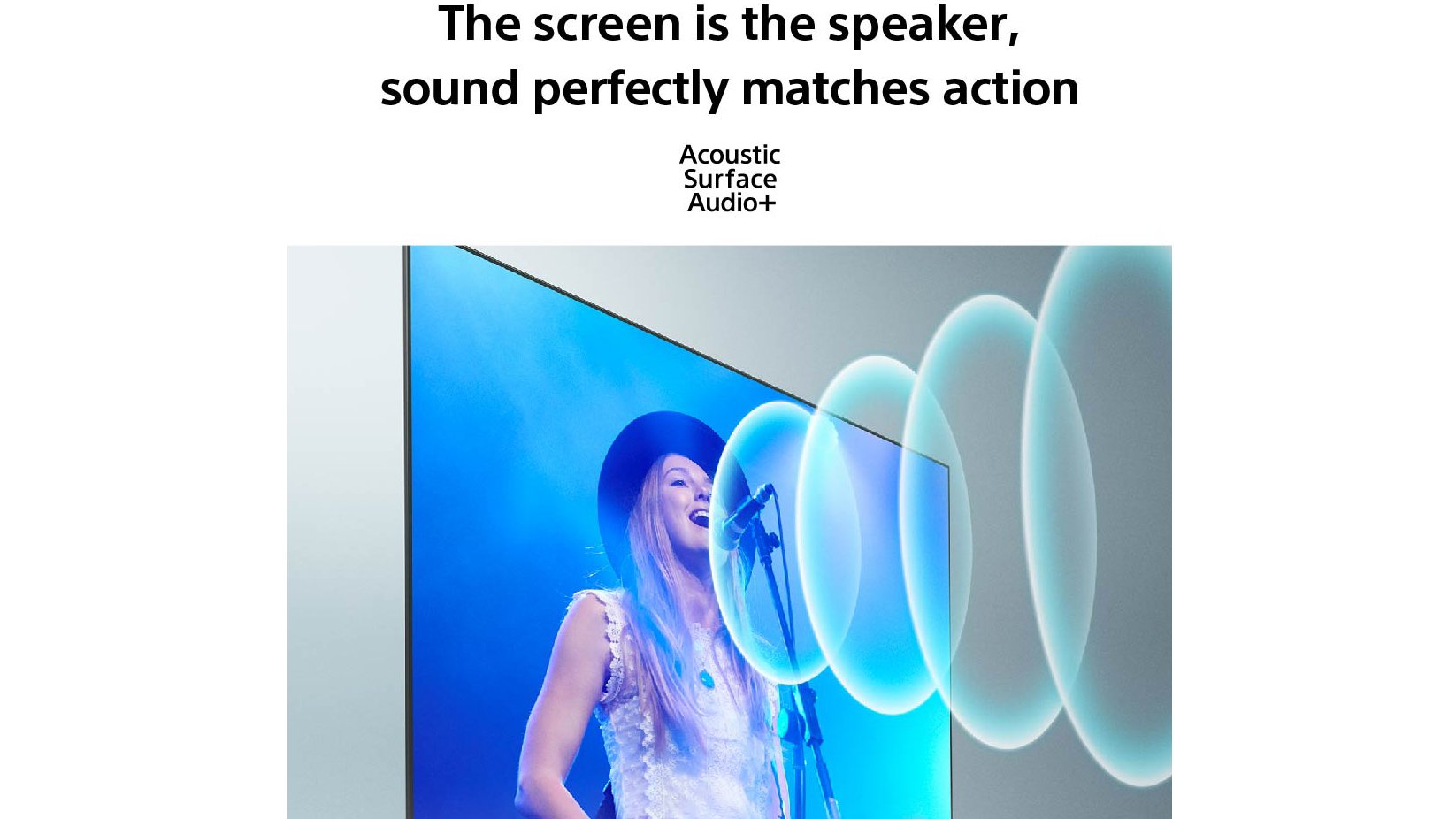
Thanks to the upgrade in the processor for the G2, LG's AI Sound Pro virtual up-mixing technology is capable of creating 7.1.2 virtual channels of sound, up from 5.1.2 last year. It has 60W of audio power across 4.2 channels.
It's particularly impressive in Dolby Atmos mode – the soundstage is wider, with clearer, more accurately positioned effects underpinned by more potent midrange and bass.
The new 7.1.2 upmixing feature – while not a rival for a proper surround sound system – does add more detail and direction to the audio, and even a little more height. That's impressive given it only carries a 4.2 speaker setup.
The AI Sound system still has the edge over the Dolby Atmos mode when it comes to pure power and ‘attack’, but Atmos mode also now has its own advantages in terms of precision steering and slightly more natural soundstage construction.
But the G2's sound pales next to that of the A95K, which predictably features Acoustic Surface Audio+. This combines two subwoofers with two actuators that vibrate the entire screen in order to create sound. The actuators are larger than those of the outgoing A90J and are optimised for the new QD-OLED panel.
It sounds very good indeed. Bass notes are lent plenty of weight and punch, with impressive control to the delivery. Push it towards maximum volume levels and you will hear a little fizz and brittleness, but we’re talking about volumes that are too loud for comfort anyway – and volumes that most TVs can only dream of.
The delivery has plenty of detail and clarity too. And because the sound is tied to the onscreen action (it is, after all, literally coming from the screen), it adds an extra level of immersion.
Winner: Sony A95K
There's no contest here – if you are determined to rely upon your TV's in-built speakers, the A95K is the way to go.
Verdict
These are two of the biggest TVs of the year, and we're please to say that neither disappoints. They're both deserved five-star products, and whichever you go for, you're bound to be delighted. But which TV has the edge?
The G2 is the better for gamers, thanks to its extra 2.1-spec HDMIs and even more substantial feature support. It's got a better operating system and is notably more affordable, too.
The Sony A95K provides the better picture and sound performance, though. On the sound front, it's clear cut – the Sony is one of the best-sounding TVs you can currently buy and the LG, while better than last year's equivalent, isn't really in the same league.
It's much closer where picture performance is concerned, which might surprise some who've been drawn into the excitement of the new QD-OLED panel technology, but while the A95K isn't brighter than the G2, it's more colourful and expressive in the brightest parts of the picture. On top of that, it's even more authentic in its overall colour reproduction and even better with motion than the G2.
Overall winner: Sony A95K
Hardcore gamers will still be better served by the LG G2, but the Sony A95K delivers even better picture and sound quality, and is the premium OLED of choice for those who can afford it.
MORE:
Check out our rundown of the best TVs you can currently buy
LG 2022 TV lineup: everything you need to know about this year's range
These are the best Sony TVs you can buy
Get the What Hi-Fi? Newsletter
The latest hi-fi, home cinema and tech news, reviews, buying advice and deals, direct to your inbox.
Joe has been writing about tech for 20 years, first on staff at T3 magazine, then in a freelance capacity for Stuff, The Sunday Times Travel Magazine (now defunct), Men's Health, GQ, The Mirror, Trusted Reviews, TechRadar and many more. His specialities include all things mobile, headphones and speakers that he can't justifying spending money on.

